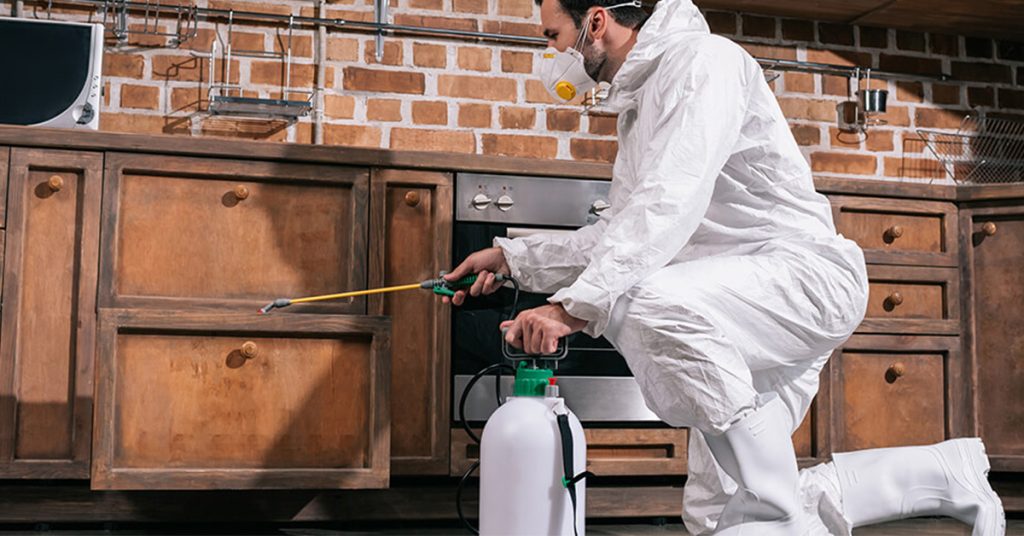Checking Out Infestation and Therapy Methods worldwide of Pest Control
The landscape of parasite control encompasses a myriad of challenges, especially as invasions of usual house insects proceed to develop. Comprehending the behaviors and reproductive patterns of these problems is essential for establishing efficient treatment techniques. By incorporating preventive actions with advanced management strategies, such as Integrated Pest Administration (IPM), house owners can much better secure their atmospheres. Nonetheless, the effectiveness of these techniques may differ considerably based on certain scenarios. What underlying elements add to the success or failing of these strategies in various settings?

Usual Household Vermin
When it comes to managing our living rooms, understanding typical household pests is critical. These pests not only interrupt our comfort but can also pose health dangers and damage building. The most common family pests consist of ants, roaches, rats, termites, and bed pests.
Ants, usually seen foraging in kitchens, can contaminate food and develop big nests. Rats, including mice and rats, can cause structural damage and lug diseases like hantavirus and salmonella.
Recognizing the indications of these insects, such as droppings, nests, or bite marks, is important for very early intervention (Pest Control Lockhart). Appropriate hygiene techniques, sealing entry points, and keeping a clutter-free environment work preventative actions. By recognizing these usual household bugs and comprehending their habits, homeowners can take positive steps to alleviate infestations, making certain a healthier living setting
Recognizing Parasite Infestations
Insect problems can intensify quickly, transforming a small nuisance into a significant trouble otherwise resolved immediately. Understanding the nature of these invasions is crucial for efficient monitoring. Bugs can invade domestic and industrial spaces for various reasons, including the look for food, sanctuary, or breeding grounds. Usual variables adding to invasions include inadequate cleanliness, architectural susceptabilities, and seasonal modifications that drive parasites indoors.
Recognizing the kind of pest is crucial, as various species exhibit diverse habits and reproductive rates. Rodents might develop nests in covert locations while pests like cockroaches thrive in moist settings. Early discovery frequently rests on acknowledging signs such as droppings, munch marks, or unusual sounds, which can show a trouble prior to it comes to be severe.
Warm, humid climates can help with the quick development of parasite populaces, while changes in landscaping or building can unintentionally develop helpful atmospheres. An enlightened technique to comprehending these dynamics lays the groundwork for efficient parasite administration techniques in the future.
Therapy Techniques and Methods
Effective treatment approaches and methods are crucial for minimizing parasite invasions and bring back a risk-free setting. A multifaceted approach is usually best, incorporating chemical, organic, and mechanical techniques tailored to the particular parasite and the extent of the invasion.
Chemical treatments include making use of pesticides and herbicides, which can properly eliminate parasites. Proper application and adherence to security standards are crucial to minimize risks to people and non-target organisms. Integrated Parasite Management (IPM) encourages the cautious use chemicals as a last option, relying rather on tracking and threshold levels to determine intervention requirements.
Biological control techniques entail introducing natural killers or bloodsuckers to lower insect populaces. This method is progressively preferred, particularly in agricultural setups, as it advertises ecological sustainability.
Mechanical approaches, such as catches and barriers, try this provide immediate remedy for insects without introducing chemicals. Choices consist of sticky traps for insects or physical obstacles for rodents.
Inevitably, the selection of therapy approach ought to take into consideration the specific pest, the setting, and possible effects on human health and wellness and ecosystems. A balanced combination of these approaches can successfully handle problems while advertising long-term bug control options.
Preventive Steps for House
Proactively attending to bug issues prior to they intensify is important for maintaining a healthy and balanced home atmosphere (Pest Control Lockhart). Carrying out effective safety nets can substantially lower the possibility of infestations, ultimately securing both your residential property and wellness

Appropriate landscaping additionally plays a vital function in prevention. Maintaining hedges and trees trimmed away from your home reduces the chances of bugs finding their means indoors. Make sure that water drainage systems are operating successfully to prevent standing water, which can attract in check my reference insects and various other pests.
Finally, regular evaluations are suggested. Routinely inspecting for indications of insect activity enables very early intervention. By adopting these preventive actions, house owners can create an atmosphere that is much less congenial to insects, consequently improving their general lifestyle and reducing the need for comprehensive bug control treatments.
Industrial Bug Control Techniques
A detailed method to commercial insect control is crucial for services intending to maintain a risk-free and sanitary environment. Reliable techniques include a mix of normal evaluations, worker training, and the execution of Integrated Insect Administration (IPM) methods.
Regular assessments enable very early detection of pest task, permitting timely intervention. Companies must establish a regular timetable for these evaluations, concentrating on high-risk areas such as kitchens, storeroom, and garbage disposal websites. Staff member training is just as crucial; personnel should be enlightened on the signs of pest problems and the relevance of reporting them right away.
Executing IPM practices aids mitigate bug problems sustainably. This includes habitat alteration, such as securing entrance points and decreasing clutter, along with using natural deterrents prior to considering chemical treatments.

Additionally, working together with a licensed parasite control provider guarantees access to professional knowledge and sophisticated therapy alternatives. This collaboration can bring about customized pest control intends customized to the details demands of business, reducing risks and enhancing total efficiency. Inevitably, a positive and educated technique promotes a pest-free atmosphere, guarding both public health and wellness and business credibility.
Final Thought
In conclusion, efficient parasite control demands a comprehensive understanding of usual house pests and their actions, paired with targeted treatment approaches. Applying precautionary actions along with treatment techniques such as Integrated Bug Management and biological control boosts the capability to alleviate problems.